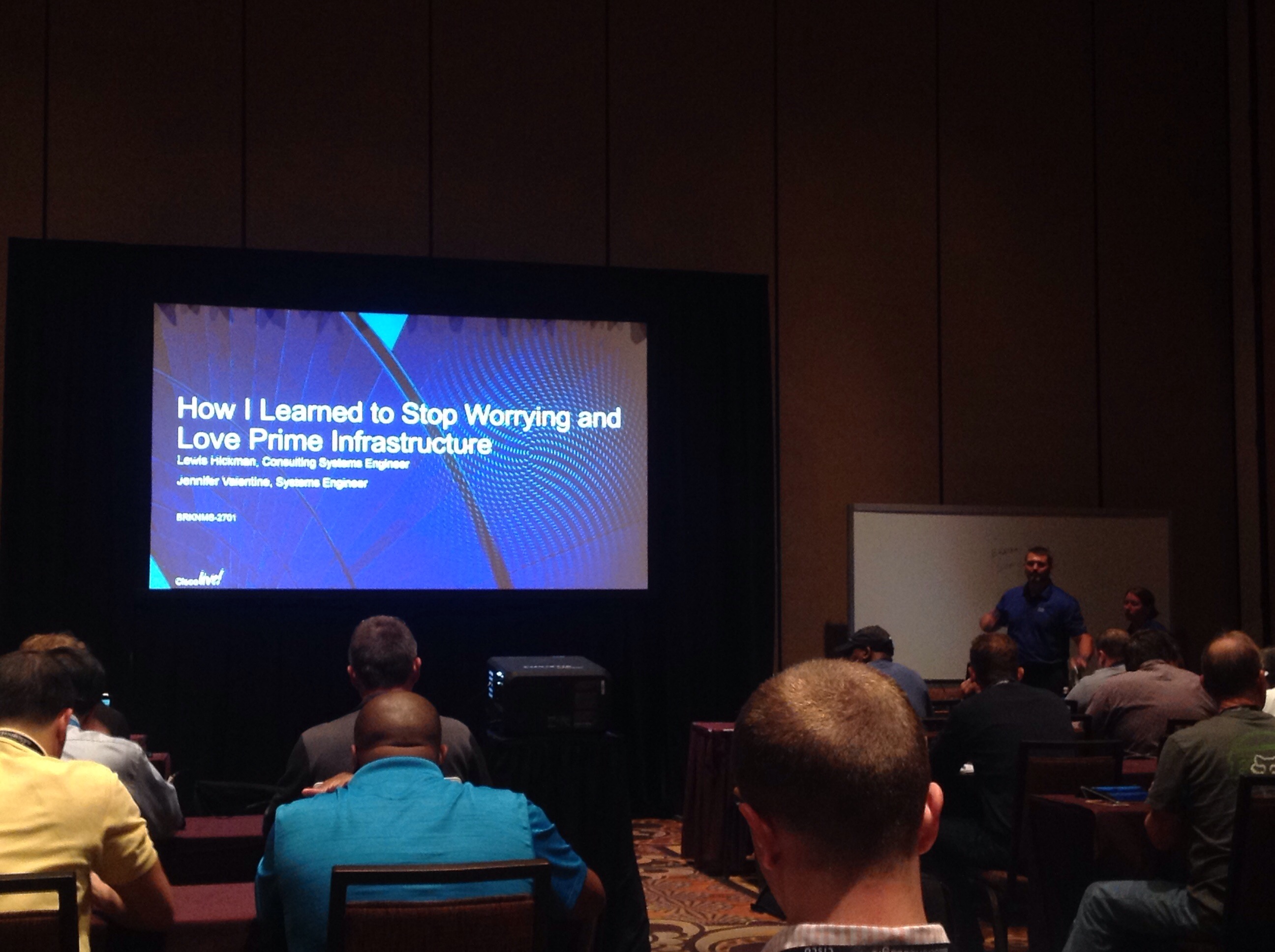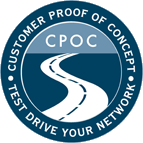
Presenters:
- Lewis Hickman, Consulting Systems Engineer
- Jennifer Valentine, Systems Engineer

I know it's cliche and I know I'm biased because I have an @cisco.com email address, but I've truthfully never seen anything like CPOC before. And the customer's I've worked with at CPOC haven't either. It's extremely gratifying to take something you built "on paper" and prove that it works; to take it to the next level and work those final kinks out that the paper design just didn't account for.
Anyways, on to the point of this post. When I was building the topology for the customer, I kept notes about random things I ran into that I wanted to remember later or those "oh duh!" moments that I probably should've known the answer to but had forgotten or overlooked at the time. This post is just a tidy-up of those notes, in no particular order.
I wanted to jot down some quick notes relating to running a virtual Firepower sensor on ESXi and how to validate that all the settings are correct for getting traffic from the physical network down into the sensor.
Firepower is the name of Cisco's (formerly Sourcefire's) so-called Next-Gen IPS. The IPS comes in many form-factors, including beefy physical appliances, integrated into the ASA firewall, and as a discrete virtual machine.
Since the virtual machine (likely) does not sit in-line of the traffic that needs to be monitored, traffic needs to be fed into the VM via some method such as a SPAN port or a tap of some sort.
The idea for this post came from someone I was working with recently. Thanks Fan (and Carson, and Shree) :-)
In Service Software Upgrade (ISSU) is a method of upgrading software on a switch without interrupting the flow of traffic through the switch. The conditions for successfully completing an ISSU are usually pretty strict and if you don't comply, the hitless upgrade can all of a sudden become impacting.
The conditions for ISSU on the Nexus 5000 are pretty well documented (cisco.com link) however, there are a couple bits of knowledge that are not. This post is a reminder of the ISSU conditions you need to comply with and a call out to the bits of information that aren't so well documented.
The oft-requested and long awaited arrival of TACACS+ support in Cisco's Identity Services Engine (ISE) is finally here starting in version 2.0. I've been able to play with this feature in the lab and wanted to blog about it so that existing ISE and ACS (Cisco's Access Control Server, the long-time defacto TACACS+ server) users know what to expect.
Below are five facts about how TACACS+ works in ISE 2.0.
I will be presenting at the Cisco Connect Canada tour in Edmonton and Calgary on November 3rd and 5th, respectively. My presentation is about that three letter acronym that everyone loves to hate: SDN :-)
I will talk about SDN in general terms and describe what it really means; what we're really doing in the network when we say that it's "software defined". No unicorns or fairy tales here, just engineering.
Next I'll talk about three areas where Cisco is introducing programmability into its data center solutions:
Below are the notes I made for myself while researching these topics and preparing for the presentation. At the bottom of this post is a Q&A section with some frequently asked questions.
At the time that I'm writing this I've been working at Cisco for just over 3 years as a Systems Engineer. Prior to that I worked for multiple Cisco customers and was heavily involved in Cisco technologies. I know what a monster cisco.com is and how hard it can be to find what you're looking for.
Since starting at Cisco, the amount of time I've spent on cisco.com has shot up dramatically. Add to that studying for my CCIE and it goes up even more. In fact, cisco.com is probably the number 1 or 2 site I visit on a daily basis (in close competition with Google/searching).
After spending all this time on the site and given how vast the site is and how hard it can be to find that specific piece of information you're looking for, I'm writing this post as an aid to help other techies, like myself, use the site more effectively.
Mohamed Anwar asked the following question on my post "4 Types of Port Channels and When They're Used".
"I need a clarification, where if a member link fails, what will happen to the traffic already sent over that link ? Is there any mechanism to notify the upper layer about the loss and ask it to resend ? How this link failure will be handled for data traffic and control traffic ?"
— Mohamed Anwar
I think his questions are really important because he hits on two really key aspects of a failure event: what happens in the data plane and what happens in the control plane.
A network designer needs to bear both of these aspects in mind as part of their design. Overlooking either aspect will almost always open the network up to additional risk.
I think it's well understood that port channels add resiliency in the data plane (I cover some of that in the previous article). What may not be well understood is that port channels also contribute to a stable control plane! I'll talk about that below. I'll also address Mohamed's question about what happens to traffic on the failed link.
I was preparing a presentation the other day about the high level differences between IOS, IOS-XE and NX-OS and one of the things I included in the presentation was the various platform and branch identifiers that's used in each OS. It's just a bit of trivia that I thought would be interesting and might come in handy one day. I'm posting the information I collected below so everyone can reference it.
As a follow-on to my previous article on onePK — Cisco onePK: Now I Get It — I recorded a screencast in which I talk about what a onePK-enabled network is capable of. I also demonstrate two applications which make use of onePK to gather telemetry from the network and also program the network.
Disclaimer: The opinions and information expressed in this blog article are my own and not necessarily those of Cisco Systems.